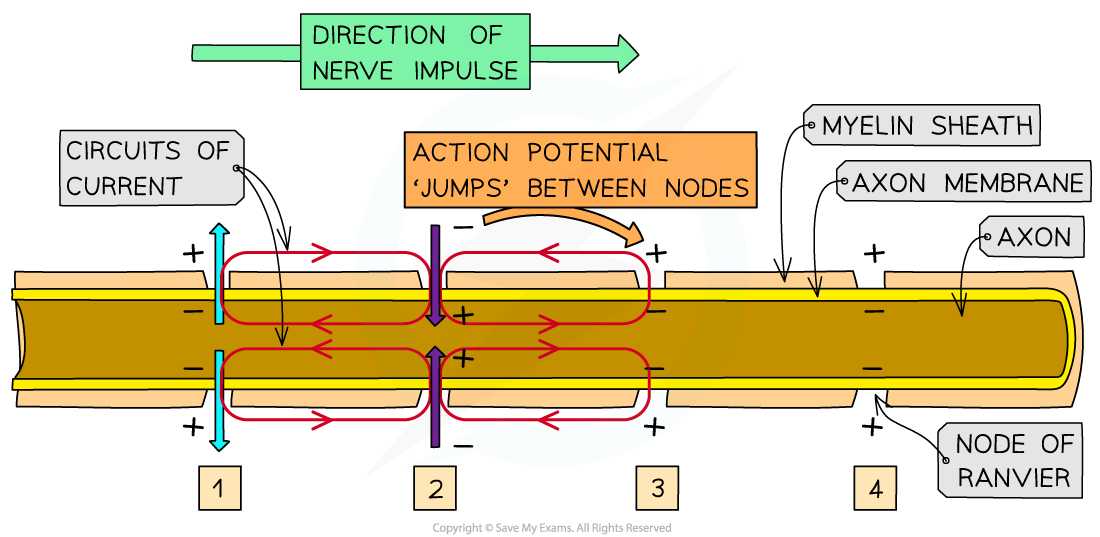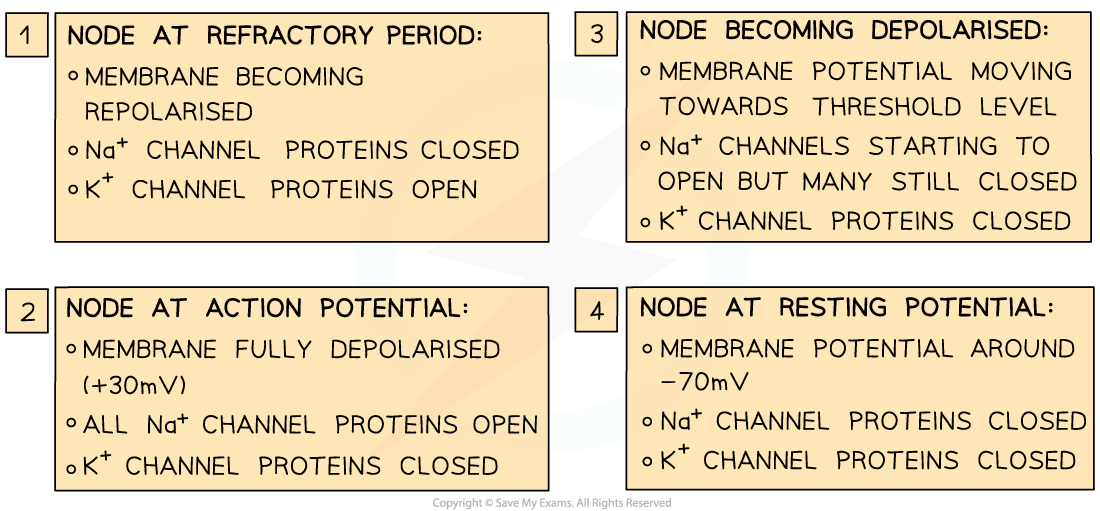Speed of Conduction of Impulses (Cambridge (CIE) A Level Biology): Revision Note
Exam code: 9700
Speed of conduction of impulses
The speed of conduction of an impulse refers to how quickly the impulse is transmitted along a neurone
It is determined by two main factors:
the presence or absence of myelin (i.e., whether or not the axon is insulated by a myelin sheath)
the diameter of the axon
Myelination and saltatory conduction
In unmyelinated neurones, the speed of conduction is very slow
By insulating the axon membrane, the presence of myelin increases the speed at which action potentials can travel along the neurone:
In sections of the axon that are surrounded by a myelin sheath, depolarisation (and the action potentials that this would lead to) cannot occur, as the myelin sheath stops the diffusion of sodium ions and potassium ions
Action potentials can only occur at the nodes of Ranvier (small uninsulated sections of the axon)
The local circuits of current that trigger depolarisation in the next section of the axon membrane exist between the nodes of Ranvier
This means the action potentials ‘jump’ from one node to the next
This is known as saltatory conduction
This allows the impulse to travel much faster (up to 50 times faster) than in an unmyelinated axon of the same diameter


Diameter
The speed of conduction of an impulse along neurones with thicker axons is greater than along those with thinner ones
Thicker axons have an axon membrane with a greater surface area over which diffusion of ions can occur
This increases the rate of diffusion of sodium ions and potassium ions
This in turn increases the rate at which depolarisation and action potentials can occur

Unlock more, it's free!
Did this page help you?